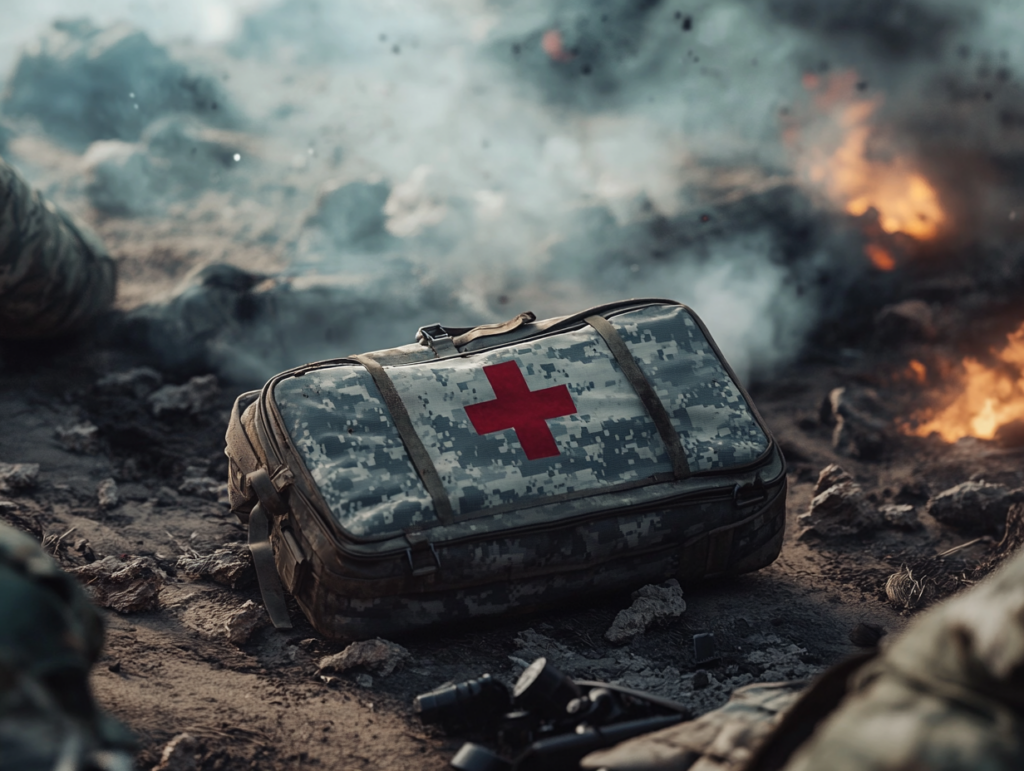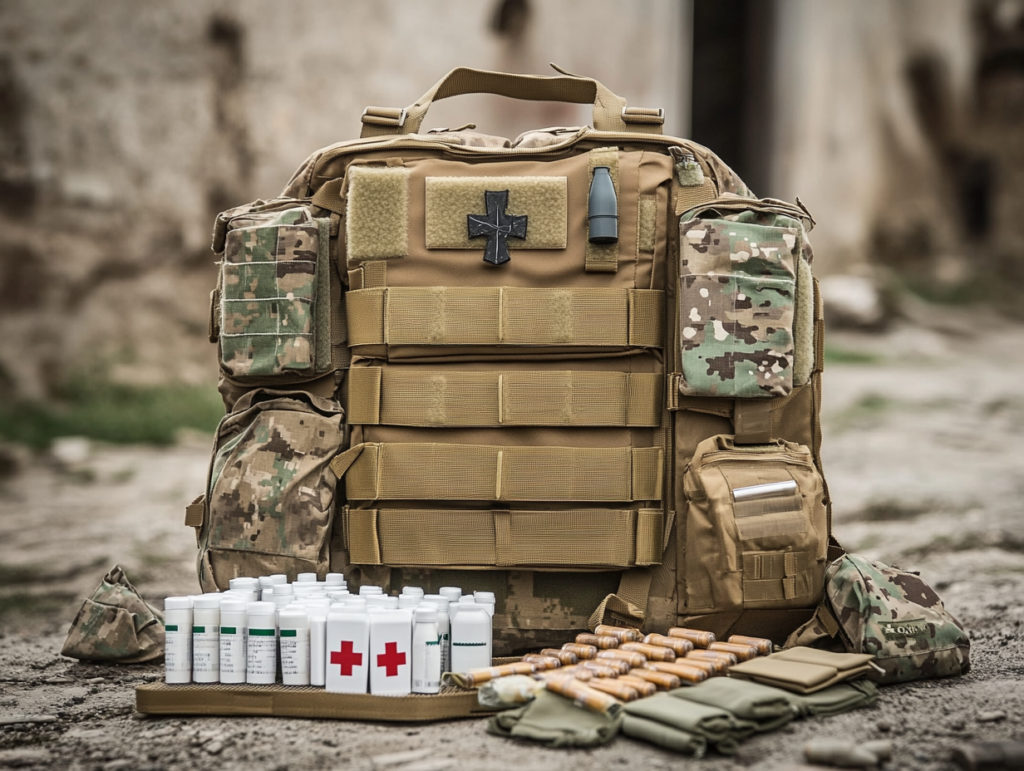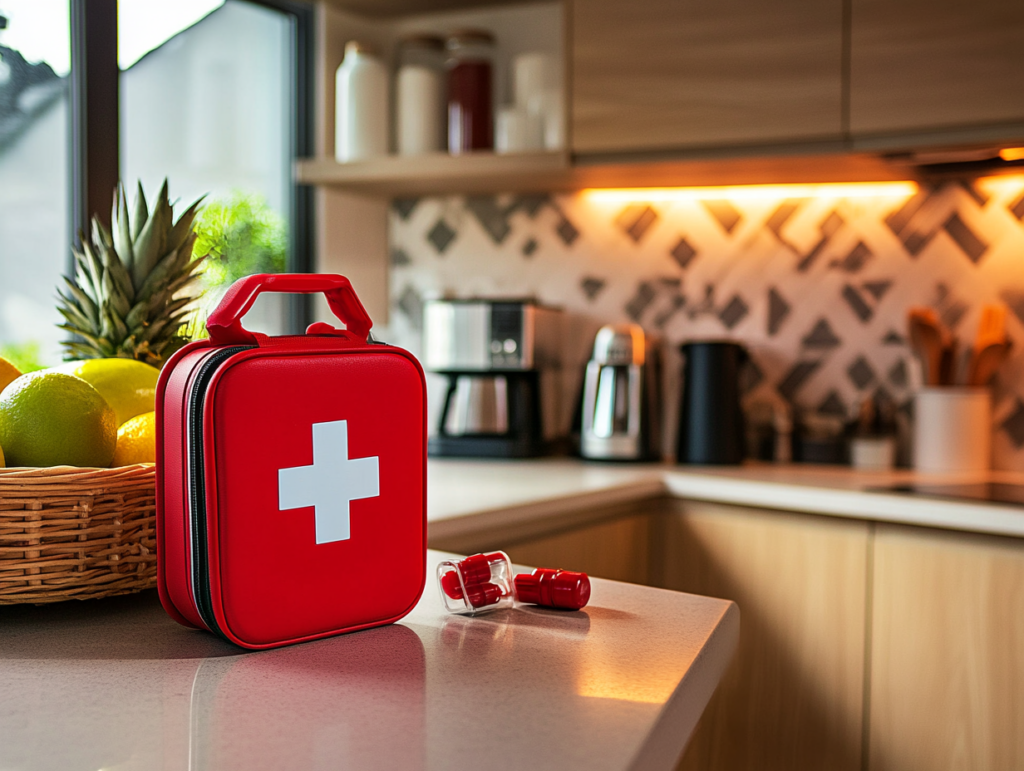In modern military operations, tactical first aid kits are not only crucial tools for soldier survival but also essential for boosting morale and improving operational efficiency.
For B2B buyers, purchasing military tactical first aid kits involves more than just choosing a product; it requires a comprehensive evaluation of mission requirements, product quality, cost control, supply chain stability, and customization services.
This blog will provide an in-depth analysis of how to select the right tactical first aid kit for different missions, explore the key factors B2B buyers care about, and analyze OEM and ODM customization options to help you develop a strategic purchasing approach.
How to Choose the Right Tactical First Aid Kit for Different Missions?
The choice of a military tactical first aid kit should be based on the type of mission, operational environment, and personnel configuration. Below, we analyze this from the perspectives of lightweight vs. fully equipped and individual soldier vs. squad configurations.
Lightweight vs. Fully Equipped
Lightweight First Aid Kit: The Choice for Quick Action
The lightweight tactical first aid kit is designed for fast-moving missions such as reconnaissance, special operations, or short-term raids.
Its core advantage lies in portability—typically weighing between 0.5 to 1 kilogram, it does not significantly increase a soldier’s load. The kit is streamlined, primarily containing the following essential medical supplies:
- Tourniquet: Quickly controls arterial bleeding to save lives.
- Compression bandage: Used for treating open wounds and preventing infection.
- Disinfectants: Such as alcohol wipes for wound cleaning.
- Small scissors: Convenient for cutting clothes or bandages.
Lightweight first aid kits are ideal for situations requiring rapid response. For instance, in urban counterterrorism operations, soldiers may need to relocate quickly, and a lightweight first aid kit enables them to provide self or buddy aid without slowing down their mobility.
Fully Equipped First Aid Kit: A Guarantee for Extended Operations
Compared to the lightweight first aid kit, the fully equipped first aid kit is suited for prolonged operations or complex environments, such as wilderness survival, trench warfare, or large-scale military actions.
This kit may weigh between 2 to 5 kilograms and contains a wider range of medical supplies, including:
- Trauma dressings: For treating extensive burns or penetrating wounds.
- Hemostatic powder/coagulants: To speed up blood clotting in severe bleeding cases.
- Painkillers: To relieve injury pain and maintain combat morale.
- Emergency blanket: To prevent hypothermia, especially in cold environments.
- Airway management tools: Such as a nasopharyngeal airway to ensure free breathing.
Although the fully equipped first aid kit is larger and heavier, it can handle a variety of injuries. For example, during long patrols, soldiers may face fractures, heatstroke, or severe trauma, and the fully equipped first aid kit provides more medical options to ensure timely treatment.
Individual Soldier vs. Squad Configuration
Individual First Aid Kit (IFAK): The Soldier’s Lifeline
The Individual First Aid Kit (IFAK) is standard issue for every soldier, designed to be compact and usually worn on a tactical vest or belt, weighing less than 0.5 kilograms. The main purpose of the IFAK is to allow soldiers to quickly provide self-aid or buddy aid in the battlefield. Typical contents include:
- Tourniquet: Can be operated with one hand to stop bleeding.
- Hemostatic bandage: Combines bleeding control and dressing functions.
- Chest seal: Treats penetrating chest wounds and prevents pneumothorax.
For instance, if a soldier is ambushed, they can quickly apply the IFAK to stop bleeding before retreating or awaiting rescue. The compact design ensures it does not hinder mobility while meeting basic battlefield first aid needs.
Squad First Aid Kit: The Core of Team Support
The squad first aid kit is typically carried by a medic or designated personnel, supporting a combat unit of 5 to 10 people. It offers greater capacity and functionality than an IFAK, allowing it to treat multiple casualties or complex injuries. Common items include:
- Various sizes of bandages: For different types of wounds.
- Splints: To treat fractures or sprains.
- Burn dressings: For chemical or flame burns.
- Portable IV kits: To rehydrate severely blood-lost casualties.
In a squad patrol, if an explosion injures multiple soldiers, the squad first aid kit can assist the medic in managing burns, bleeding, and fractures simultaneously, buying time for evacuation. Thus, squad first aid kits are better suited for collaborative operations.
Key Factors B2B Buyers Care About
For B2B buyers, procuring military tactical first aid kits is not only about fulfilling troop needs but also balancing costs and benefits. Below are three key factors in detail.
Product Quality and Military Standard Certifications
Quality Determines Survival
The quality of a military tactical first aid kit directly affects a soldier’s survival rate. Buyers should prioritize durable products capable of functioning under extreme conditions (such as high temperatures, cold, and humidity).
For example, the tensile strength of the tourniquet must meet military standards, and the bandages should be waterproof and antibacterial.
The Importance of Military Certifications
Military certifications ensure product quality. Buyers should look for the following certifications:
- ISO 9001: Quality management system certification, ensuring standardized production processes.
- ISO 13485: Medical device quality management certification, applicable to the medical supplies in the first aid kit.
- MIL-STD-810G: U.S. military standard for verifying product reliability in harsh environments.
Products with these certifications have passed rigorous testing, ensuring they can meet battlefield needs. For example, a first aid kit certified with MIL-STD-810G will maintain its functionality even in desert heat or Arctic cold.
Price Range and Bulk Purchase Discounts
Price Varies with Configuration
The price of military tactical first aid kits can vary greatly. Lightweight individual kits may range from $50 to $100, while fully equipped squad kits may cost between $300 and $500. Brand, materials, and certifications can also impact the price. For instance, well-known brands often cost more due to their reliability and reputation.
Cost Benefits of Bulk Purchases
For B2B buyers, bulk purchasing is key to reducing costs. Suppliers usually offer discounts based on order volume, such as:
- Less than 100 units: Full price or small discount.
- 100-500 units: 5%-10% discount.
- Over 500 units: 15%-20% or more in discounts.
Buyers should negotiate with suppliers in advance to clarify discount policies and plan purchases according to troop size and budget.
Supply Chain Stability and Delivery Timeframes
Reliability of the Supply Chain
A stable supply chain ensures that first aid kits will be available when needed. Buyers should choose suppliers with mature production capabilities and multiple warehouses to handle urgent orders.
For example, during military exercises or escalated conflicts, suppliers must quickly deploy stock.
The Urgency of Delivery Timeframes
Delivery timeframes directly impact troop readiness. Typically, lightweight kits have a production cycle of 2-4 weeks, while fully equipped kits may take 6-8 weeks.
In emergencies, suppliers offering expedited production and air freight services can significantly improve procurement efficiency. Buyers should specify delivery timelines in contracts and ask suppliers for logistics tracking.
OEM & ODM Customization Options
Customization services are essential for B2B buyers to enhance brand value and meet specific requirements. Below are three types of customization options.
Custom Branding with Logo and Packaging
Enhancing Brand Image
Through OEM services, buyers can print their brand logo on the first aid kit and feature unique designs on the packaging.
This not only increases product recognition but also strengthens the troops’ identification with the brand. For example, a first aid kit emblazoned with a unit’s emblem fosters a sense of belonging among soldiers.
Functional Packaging Design
Customized packaging can also incorporate practical features, such as waterproof zippers, dust-resistant coatings, or reflective strips for easy use in harsh environments.
Buyers can request specific needs based on the operational setting, such as designing moisture-resistant packaging for rainforest troops.
Specification Adjustments to Fit Customer Needs
Flexible Configuration
ODM services allow buyers to adjust the contents of the first aid kit based on mission requirements.
For instance, high-altitude operations might require the inclusion of altitude sickness medication, while naval forces may need waterproof medical supplies. This flexibility ensures the kit meets real-world needs.
Suitability for Soldier Capabilities
The complexity of the first aid kit should align with the soldiers’ medical training. For new recruits, a simpler configuration may be appropriate, while special forces can be equipped with advanced tools like portable defibrillators.
Adding Special Functional Accessories
Tactical Flashlight
In low-light environments, a tactical flashlight can provide illumination for first aid operations. A flashlight with a red-light mode not only helps in lighting but also minimizes visibility, improving concealment.
GPS Tracking Device
A GPS device can help locate the first aid kit in real-time, assisting commanders in quickly finding resources amid battlefield chaos. For large-scale search and rescue operations, GPS can direct rescuers to the injured soldiers.
Other Innovative Accessories
Buyers may also consider adding multi-functional tools, emergency signaling devices, and more to enhance the first aid kit’s versatility.
Conclusion
Procurement of military tactical first aid kits is a complex decision-making process, requiring careful consideration of mission type, product quality, cost control, supply chain stability, and customization needs.
Lightweight kits are suited for rapid action, fully equipped kits support prolonged operations, while individual configurations focus on soldier survival and squad kits enhance team collaboration. B2B buyers should prioritize high-quality products certified by military standards, seek bulk discounts, and ensure reliable supply chains and delivery timelines.
Through OEM and ODM services, custom branding, specification adjustments, and adding special accessories can further meet specific needs.
In the procurement process, maintaining close communication with suppliers and clearly defining needs and expectations is key to success.
With a strategic purchasing approach, buyers can provide high-quality tactical first aid kits for troops, improving operational efficiency and soldier survival rates, thereby ensuring the success of military operations.


